Thinking About Curtain Bangs for Your Short Hair? Read This First
Over the years, I’ve seen countless hair trends cycle through the salon, but some looks just have a special kind of staying power. Curtain bangs are definitely one of them. There’s a softness to them that’s hard to beat, and while they were traditionally paired with long hair, we’re now seeing them everywhere on bobs, shags, and even pixie cuts.
In this article
And it’s a fantastic look! But let’s be real—getting it right on short hair is a whole different ball game. The way the hair needs to be cut and how it falls is completely unique. So, if you’re seriously considering this style, it’s worth asking yourself a few questions first:
- Am I willing to spend about 5-10 minutes styling my bangs every morning?
- Can I commit to a salon trim every 4-6 weeks to keep them looking sharp?
- Do I have a super-strong cowlick right where my part is? (This can be a dealbreaker, honestly.)
If you’re still nodding along, awesome! You’re in the right place. This is a guide based on real-world salon experience, not just theory. We’ll get into the cutting techniques the pros use, the common mistakes people make, and how to make this style truly work for you.

It’s About Your Hair, Not Just Your Face Shape
You’ve probably seen articles that say curtain bangs only work for certain face shapes. In my experience, that’s way too simplistic. A good stylist can tailor a cut to flatter just about anyone. The things that really matter are your hair’s texture, its density, and its natural growth patterns. These are what will determine how your bangs actually behave once you leave the salon.
Hair Texture Makes All the Difference
The type of hair you have is the number one factor. It tells a stylist what tools to use and which techniques will give you that soft, sweeping look instead of a frustrating mess.
For Fine Hair:
The biggest worry for those with fine hair is that the bangs will look sparse or limp. And it’s a valid concern! If they’re not cut correctly, they can separate easily. To prevent this, the go-to technique is precise point cutting, which creates soft ends without taking out too much precious volume. A heavy, blunt cut is a major no-no; it just creates a harsh line that highlights how delicate the hair is.

For Thick or Coarse Hair:
With thick hair, you have the opposite problem: the dreaded “helmet bangs” that are too bulky and triangular. The goal is to remove weight without creating choppy, obvious layers. This is often done with deep point cutting or by using texturizing shears inside the section of hair—a pro move that debulks internally while keeping the ends looking solid. A razor can also work wonders on thick hair, creating beautifully soft, tapered ends.
For Wavy or Curly Hair:
Okay, this is advanced territory. Cutting curtain bangs on curly hair is a specialty. You almost always have to cut them dry, curl by curl, to see exactly how each one will spring up. Cut curly hair wet, and you’re gambling with shrinkage—your bangs could end up inches shorter than you wanted. The aim is a soft, cascading frame, not a poodle-like pouf on your forehead.
Let’s Talk About Cowlicks
Ah, the cowlick. That stubborn little patch of hair with a mind of its own. A strong cowlick right at your hairline can force your bangs apart or make them stick straight up. A stylist should always check for one during your consultation. If you have a really aggressive one, curtain bangs might be a constant battle. Sometimes heat and product can tame it, but often a side-swept bang that works with the cowlick is a much happier, lower-maintenance choice.
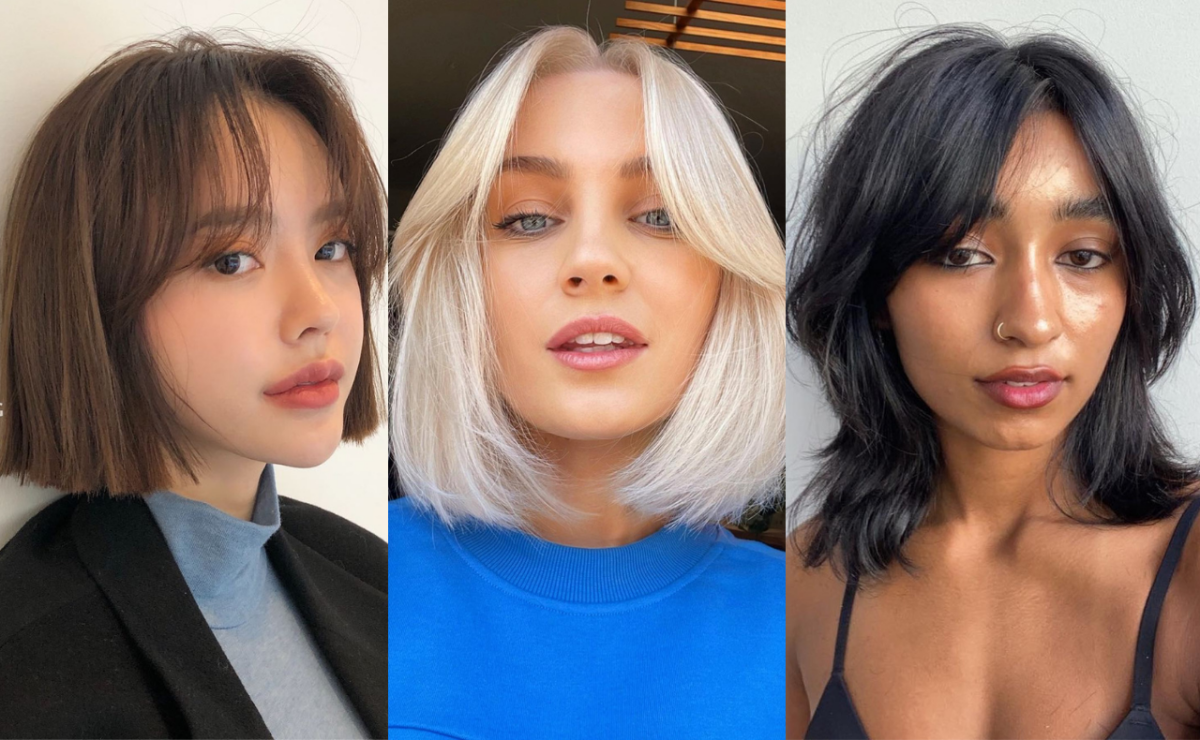
In the Salon: How the Magic Happens
A great set of curtain bangs is a mix of geometry and art. A professional cut should feel thoughtful and precise. It all starts before the scissors even come out.
First off, a proper haircut for this style isn’t cheap. Expect to pay anywhere from $65 to $150+ for a quality cut and style, depending on your location and the stylist’s experience. It’s an investment in a look that frames your entire face.
The All-Important Consultation
We always start with a chat. Bring inspiration photos, but be realistic—the person in the picture might have a totally different hair type. More importantly, we talk about your lifestyle. How much time are you actually going to spend on your hair each morning? A five-minute routine requires a different approach than a full blowout session. This conversation makes sure we’re on the same page.
Sectioning and Cutting Basics
The classic way to create curtain bangs is with a triangle section at the front of your hairline. A narrow triangle gives you wispier bangs, while a wider one creates a more dramatic, connected fringe.
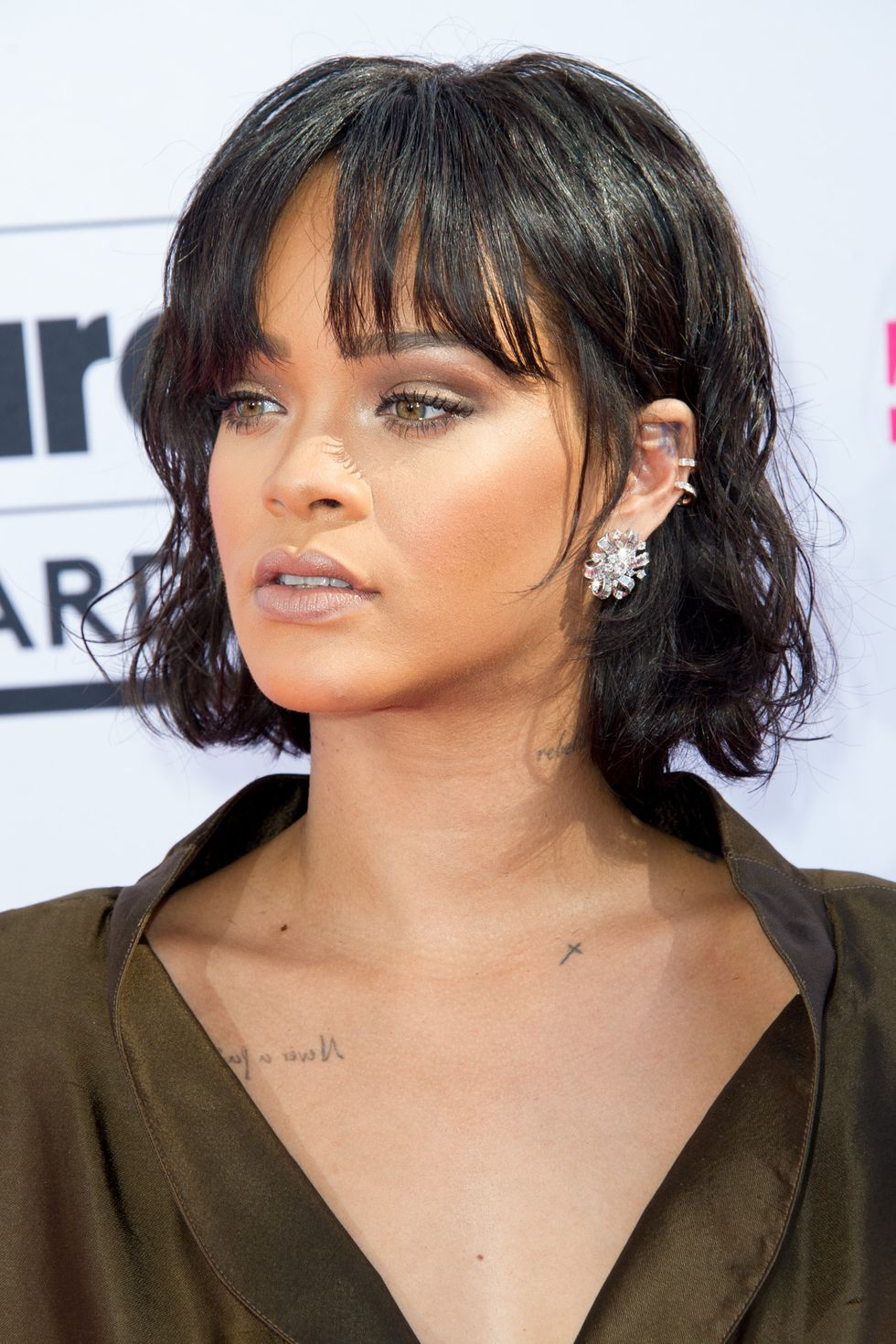
The real secret, though, is a technique called over-direction. The stylist pulls the hair from the right side of the triangle all the way over to the left and cuts it. Then they do the exact opposite for the other side. Why? When the hair falls back into place, this creates that perfect shorter-to-longer sweep away from your face. It’s a simple concept that makes a huge difference.
Finally, the bangs have to blend seamlessly with the rest of your short haircut. On a bob, they might connect to the shortest face-framing layer. On a shag, they basically become the starting point for all the other layers. This connection is what makes the style look intentional and cohesive.
Your At-Home Toolkit and Styling Routine
A great cut is just the beginning. Nailing the look day-to-day comes down to your routine and products. Don’t worry, it’s easier than it sounds.
The Blow-Dry Method that Actually Works
Getting the roots to behave and the ends to sweep is key. Here’s how:

- Always use the nozzle on your blow dryer. It focuses the air and gives you control, preventing a frizzy mess.
- Tackle the roots first. This is a must if you have a cowlick. Using just your fingers, blow-dry the roots of your bangs straight down onto your forehead. Then, brush them all to the left and blast with heat. Then all to the right. This confuses the hair roots and helps neutralize stubborn growth patterns.
- Grab a round brush. Once the roots are mostly dry, use a round brush to style. For short hair, a brush with a 1 to 1.5-inch barrel is perfect. Pro tip: A ceramic or tourmaline brush will heat up and act like a mini curling iron, giving you a smoother finish and fighting frizz.
Quick-Hack for Busy Mornings: In a rush? You don’t have to wash all your hair! Just pull the rest back and wash only your bangs in the sink. It takes two minutes, and a quick blow-dry makes them look totally fresh.
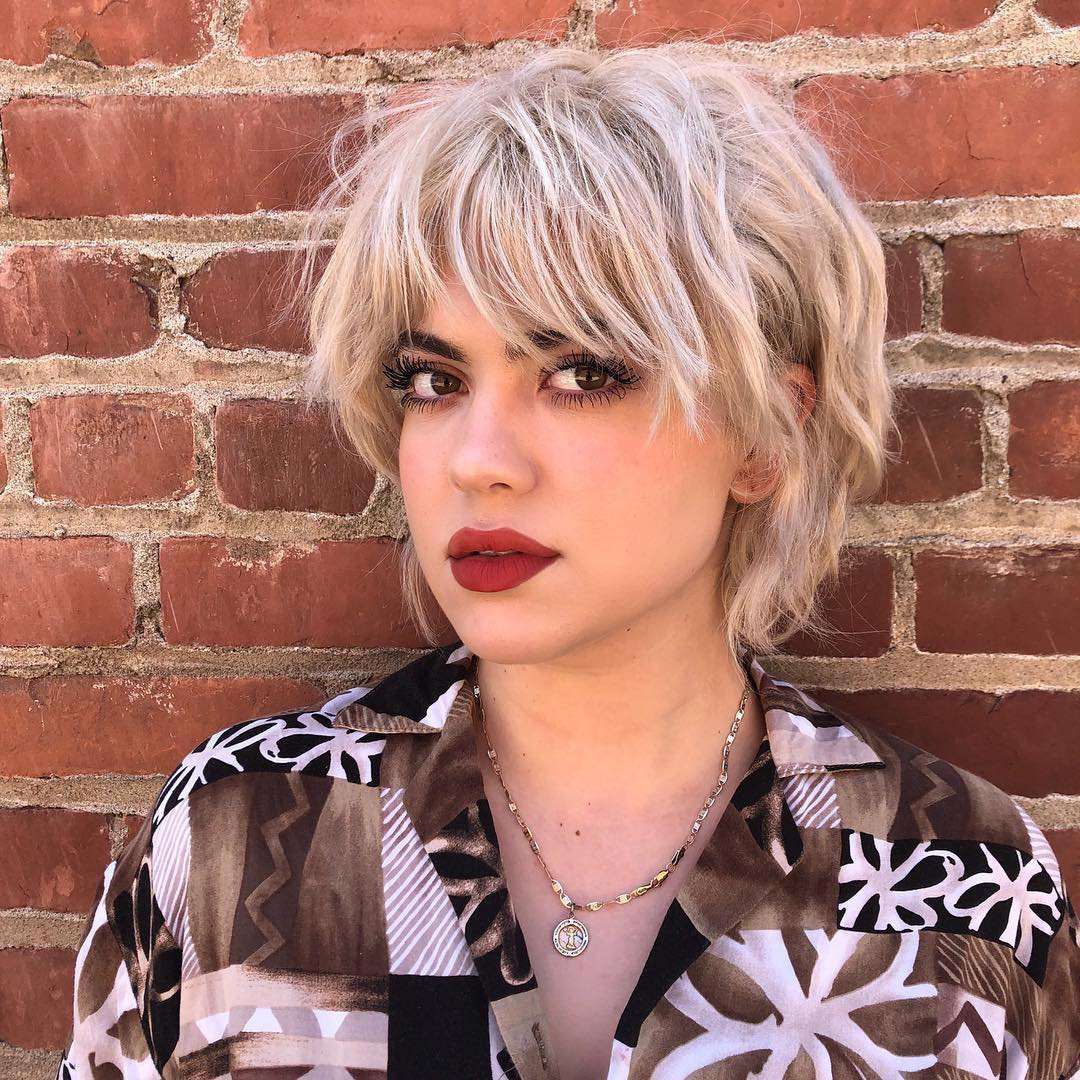
Your Product Shopping List
Using the right product can make or break your style. Here’s a quick guide to what you should be looking for at places like Ulta, Target, or your local salon.
- If you have fine hair, you need lift without weight. Look for a volumizing mousse or a root-lift spray. For a great drugstore option under $10, try Not Your Mother’s Plump for Joy Mousse. If you want to splurge on a salon-grade product, Redken’s Guts 10 Root Volumizing Spray is a cult favorite (around $25).
- If you have thick hair, you need smoothness and control. A small amount of smoothing cream applied to damp hair will tame frizz. You can also use a light-hold hairspray to keep things in place. Avoid anything too heavy that will make your bangs look greasy.
- If you have wavy or curly hair, you need hydration and definition. A good curl cream is your best friend. Often, the best method is to apply product, arrange the bangs with your fingers, and then let them air-dry or use a diffuser on a low setting.
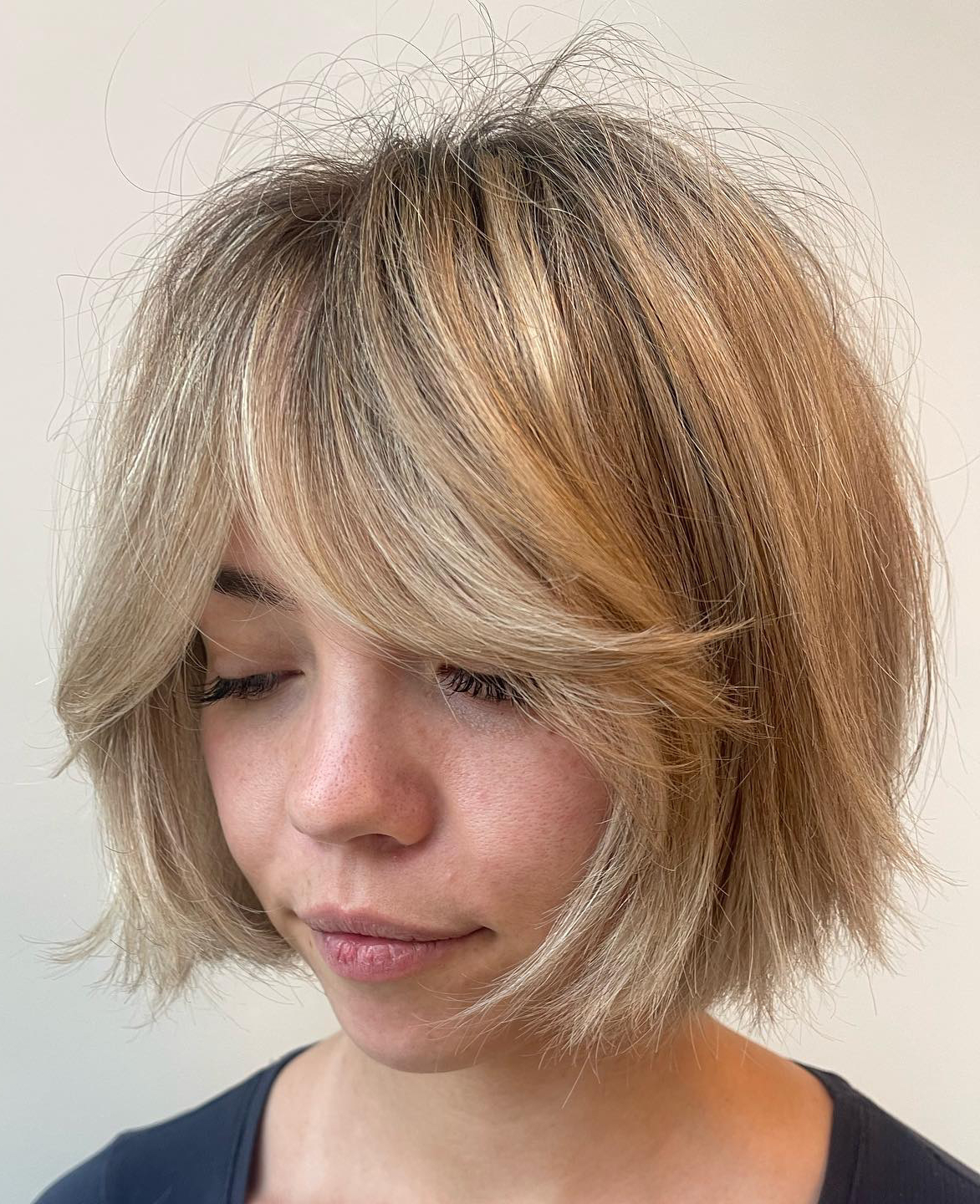
A Gentle Warning About DIY Trims
I get it. Your bangs are suddenly in your eyes, and the temptation to grab the kitchen scissors is real. Please don’t! The angles in curtain bangs are complex, and it’s incredibly easy to cut them too short or create a blunt line that ruins the whole look.
A professional bang trim is one of the best investments you can make. It usually only takes about 15 minutes and costs between $15 and $40. Many stylists offer it as a quick, standalone service between your regular haircut appointments every 4-6 weeks.
Troubleshooting Common Bang Problems
Even with the best cut, sometimes bangs have a bad day. Here’s how to fix common issues.
- “My bangs look puffy and triangular!” This usually means there’s too much weight in them. This isn’t a DIY fix. You’ll need to go back to your stylist. You can empower yourself by knowing what to ask for: “Could you please remove some weight internally? Maybe with some deep point cutting or by using texturizing shears to soften them up?”
- “They just won’t part in the middle.” That’s probably a cowlick. Try the blow-drying trick (forward, then left, then right). If it’s still stubborn, you might just have to embrace a slightly off-center part. It can still look great!
- “Help, I cut them too short!” We’ve all been there. The only real cure is patience. While you wait for them to grow (about half an inch a month), you can use a flat iron to smooth them down, which can make them appear a touch longer. Or, embrace some cute pins or a headband for a few weeks. It’s a powerful reminder to always start longer with trims!
At the end of the day, curtain bangs on short hair can be an absolutely stunning, versatile style. Success just comes down to a skilled stylist who gets your hair and a little bit of daily effort. Find a pro you trust, be honest about your routine, and you can totally rock this look with confidence.

Galerie d’inspiration


The one styling tool you can’t skip: Your blow dryer’s nozzle. Seriously. That little plastic attachment concentrates the airflow, giving you the control needed to direct your bangs forward and down before you even pick up a brush. Styling without it is like trying to paint a detailed portrait with a paint roller—you’ll get air everywhere, creating frizz and fighting your hair’s natural part instead of mastering it.

- A soft, face-framing sweep that doesn’t feel stiff.
- A bit of grit and hold to prevent them from separating.
- An effortless look that lasts all day.
The secret? A quality texturizing spray. A light mist of a product like Oribe Dry Texturizing Spray or Amika Un.Done Volume and Matte Texture Spray adds the perfect amount of lived-in body without the crunch of traditional hairspray.

More than 70% of hairstylists agree that the most common client complaint about bangs is that they get greasy long before the rest of their hair.
This is because they’re constantly touching the skin on your forehead. Keep a travel-sized dry shampoo specifically for this. A lightweight powder formula, like Klorane’s Dry Shampoo with Oat Milk, is perfect for absorbing oil without leaving a heavy, visible residue on your fringe.

What’s the best way to refresh second-day curtain bangs without a full wash?
Isolate your bangs and just wash them in the sink! It takes two minutes. Wet only the fringe section, use a tiny drop of shampoo, rinse, and then re-style with your blow dryer. This quick reset makes your entire hairstyle look instantly refreshed and is much more effective than just dousing them in product.


The ’70s vibe is strong with this style, but the modern version is less about Farrah Fawcett’s dramatic wings and more about Brigitte Bardot’s effortless French-girl chic. To get that look:
- Don’t aim for perfect symmetry; a little unevenness is part of the charm.
- Use your fingers more than your brush when styling to encourage natural texture.
- Focus on a soft, airy finish rather than a stiff, perfectly coiffed one.
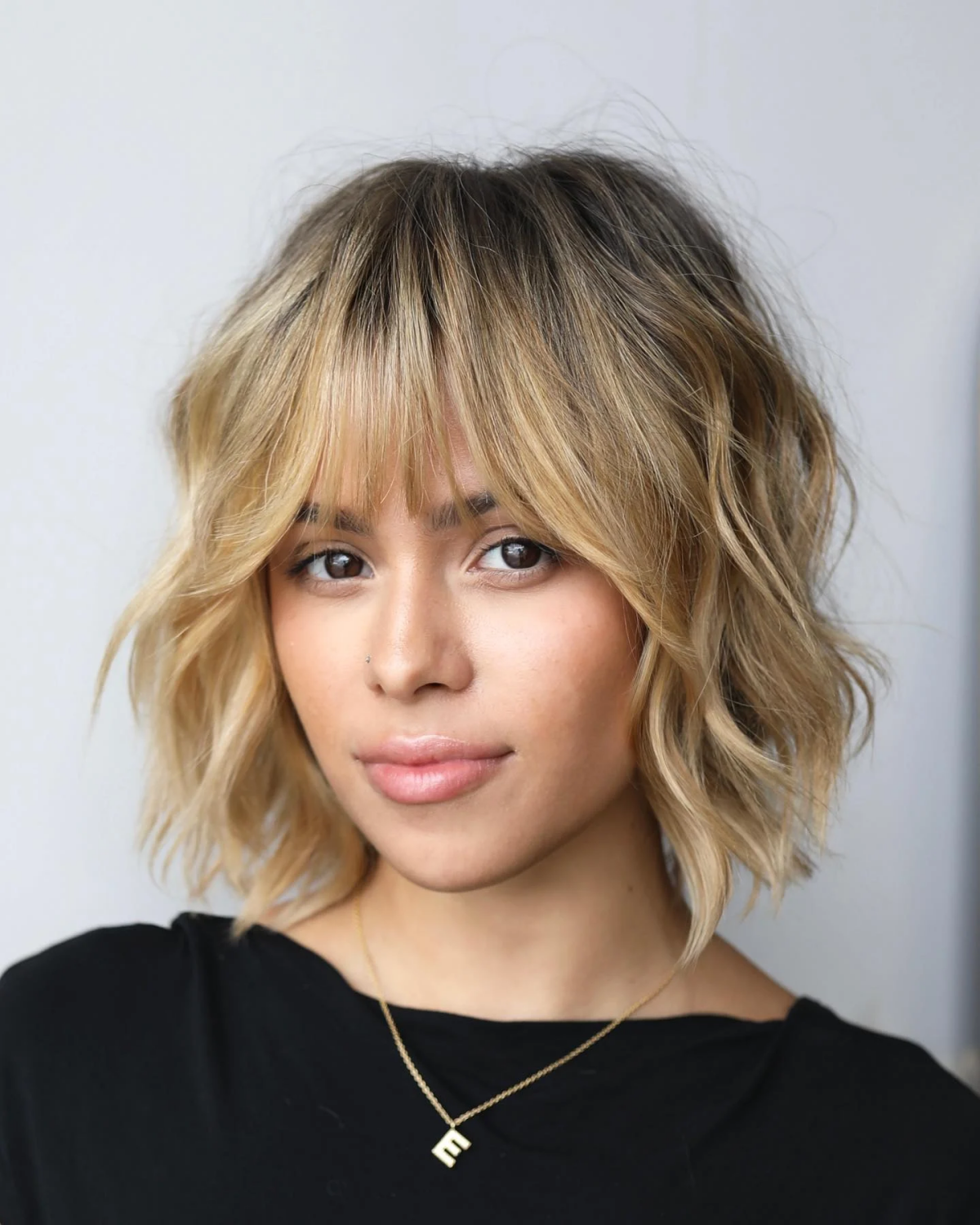
Small Round Brush: Ideal for creating that classic C-shaped curve and getting lift at the root. A ceramic or boar bristle brush under 1.5 inches in diameter, like one from Moroccanoil, is perfect for gripping short hair.
Mini Flat Iron: Excellent for smoothing out cowlicks or creating a slightly edgier, piecey look. Use a slim-plate styler like the ghd Mini Styler to clamp at the root and create a gentle bend outward.
For most, the round brush is the daily go-to, while the flat iron is the secret weapon for trouble spots.

Worried about the commitment of a salon visit every 4-6 weeks? You can sometimes stretch it to 8 weeks if your stylist adds subtle, invisible layers within the bangs. This technique allows them to grow out more gracefully, transitioning into soft, face-framing layers rather than becoming a blocky, overgrown fringe that pokes you in the eyes. Just ask your stylist for a cut with ‘good grow-out potential’.
- A small, sharp pair of hair scissors (never kitchen scissors!). Tweezerman makes reliable ones.
- A fine-tooth comb for precise sectioning.
- Styling clips to keep the rest of your hair out of the way.










